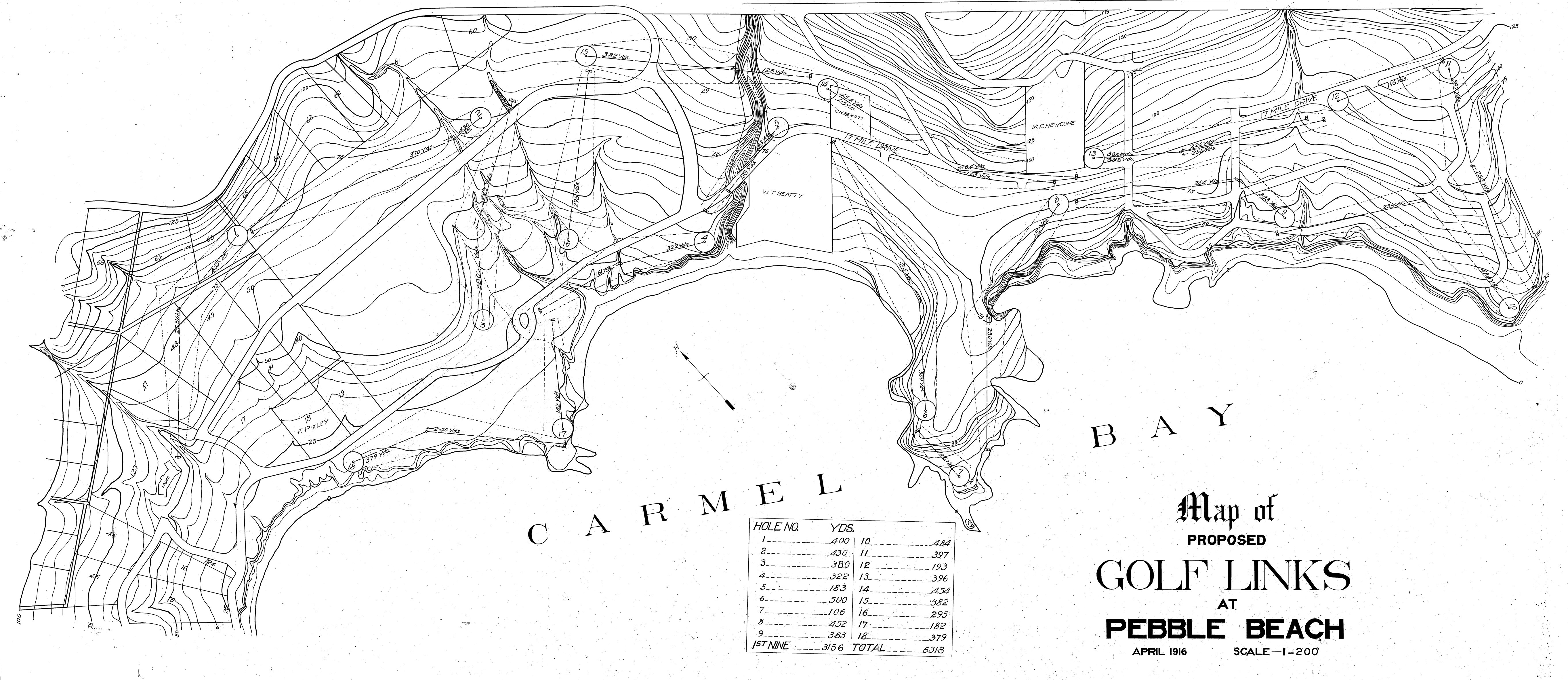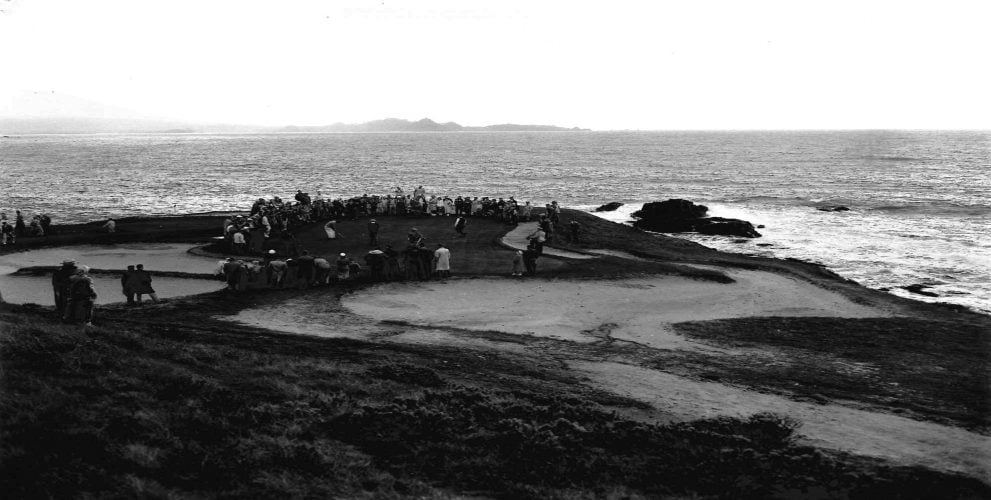Pebble Beach Golf Links was just a year old when esteemed architect William Herbert Fowler recommended that the petite par-3 7th hole was unfit for championship play.
“I am quite ready to admit the beauty of the location from a scenic standpoint, but the golfing shot required is not of such a character as would make it worthwhile to descend to the lower level and then have to rise again,” Fowler reported to S.F.B. Morse in 1920. “I think it would be quite easy to find another location for a one-shot hole to take its place, and this will enable us to play the tee shot to the 8th hole from the high ground on the same level as the (6th) green.”
Fowler had better ideas — such as adding nearly 200 yards to the 18th hole, transforming it from a short par-4 into the dramatic par-5 you play today — but thankfully, the original routing at No. 7 stuck.
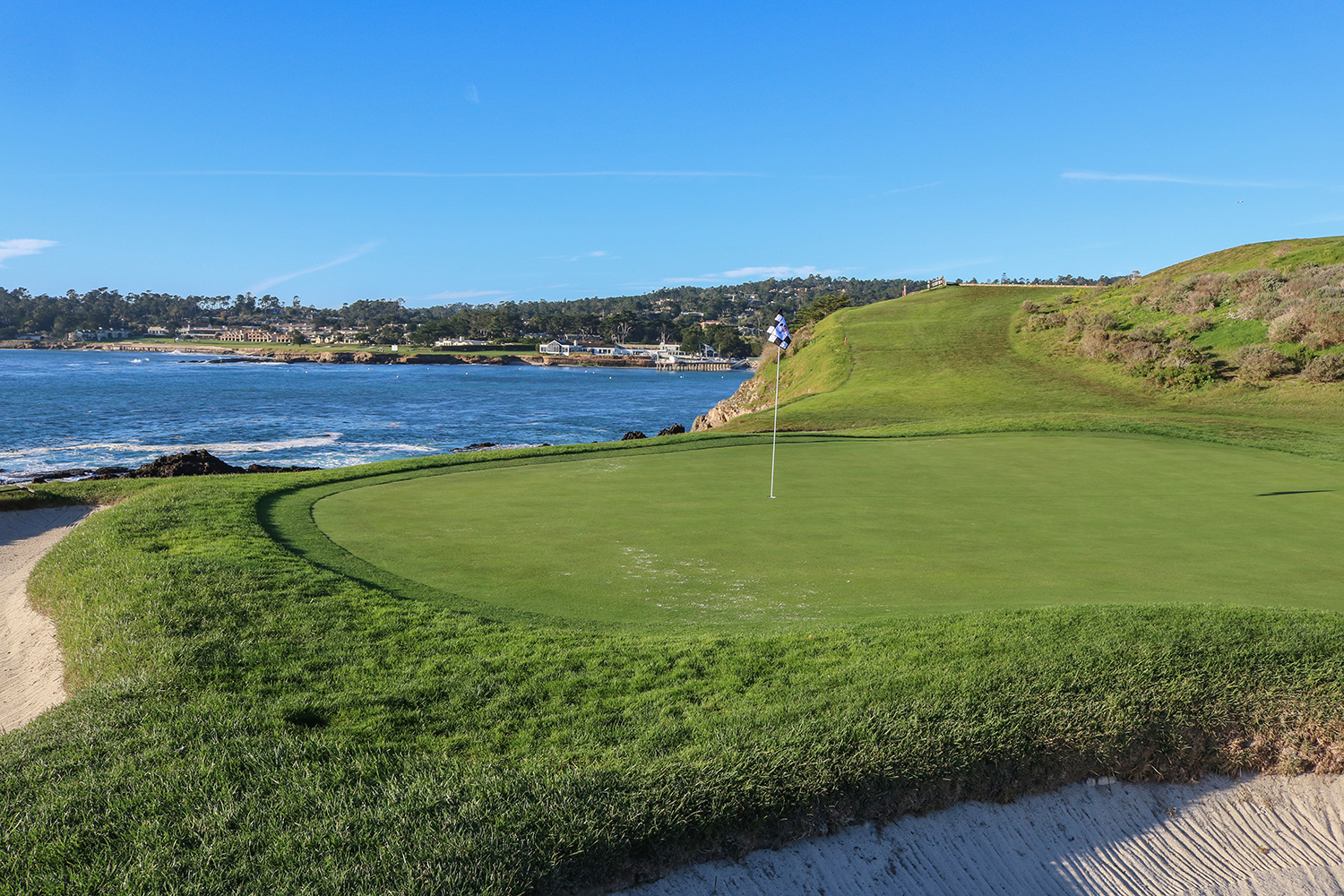
The beloved par-3 is the shortest on the PGA TOUR at just 106 yards, and played as little as 92 yards during the 2010 U.S. Open. But Pebble Beach co-designer Jack Neville recognized what a special hole No. 7 could be before it even opened.
“The seventh is a little gem of a mashie shot, only 106 yards and a drop of 40 feet from tee to green,” Neville wrote in Pacific Golf & Motor in 1917. “The latter is surrounded on three sides by the bay. There is usually a little wind blowing on this point, which gives it every natural hazard to the golfer, making this hole one of the most interesting on the links.”
The wind at No. 7 is legendary. Sam Snead chose to putt off the seventh tee rather than send a tee shot into the teeth of a wicked wind. (It was reported that he was the only player to make par on the hole that day.) Bel-Air pro Eddie Merrins actually aced the hole during the Bing Crosby, but needed a 3-iron to do so. Eventual champ Tom Kite famously chipped in for birdie during the final round of the 1992 U.S. Open after his 6-iron missed the green.
As you can see by Neville’s quote, No. 7 has measured the same yardage for nearly a century. But it hasn’t always looked the same. Here’s a visual history of the 7th green:
1916
The original proposed routing of the “Golf Links at Pebble Beach” in 1916 shows No. 7 in its current location. (Click to enlarge – notice the significantly shorter ninth and 18th holes as well.)
1924
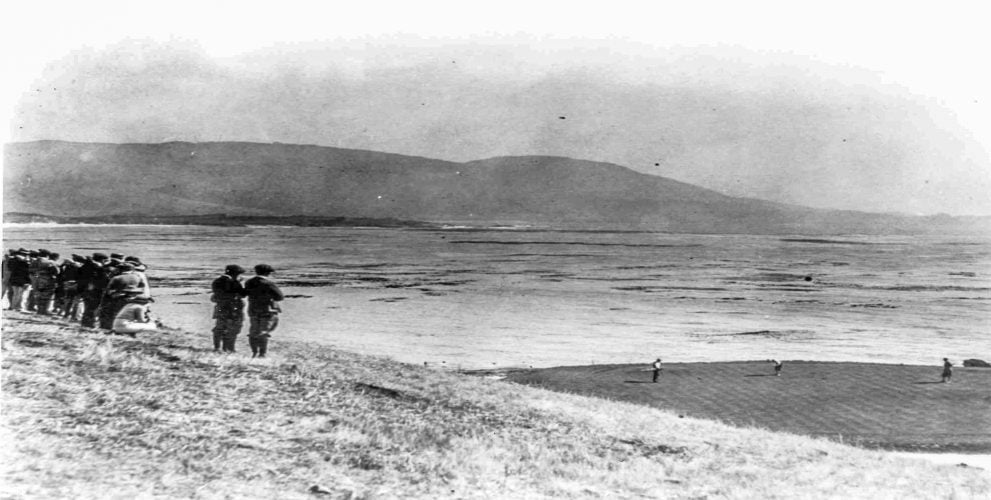
Five years after Pebble Beach Golf Links opened in 1924, the 7th green was relatively massive.
1925
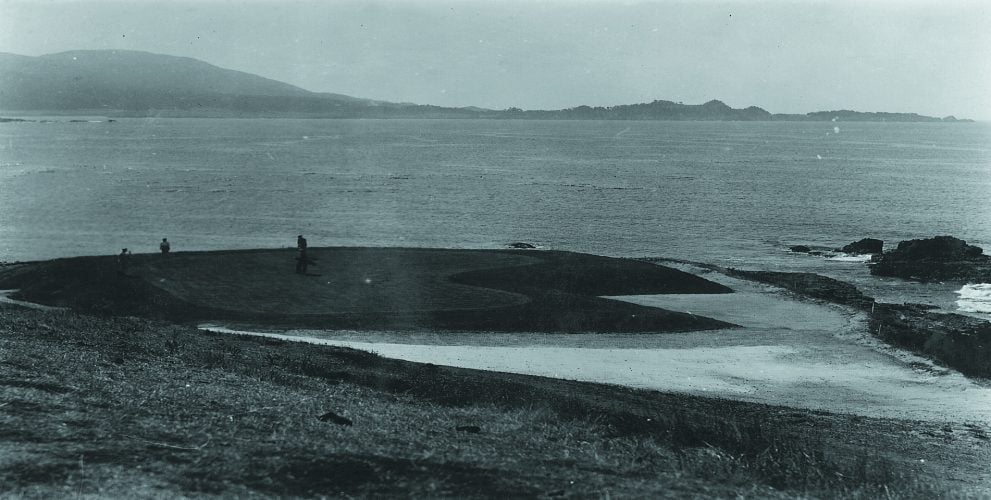
This shot captures play during the 1925 California State Amateur. One large bunker wraps around a slimmed-down L-shaped green.
1928
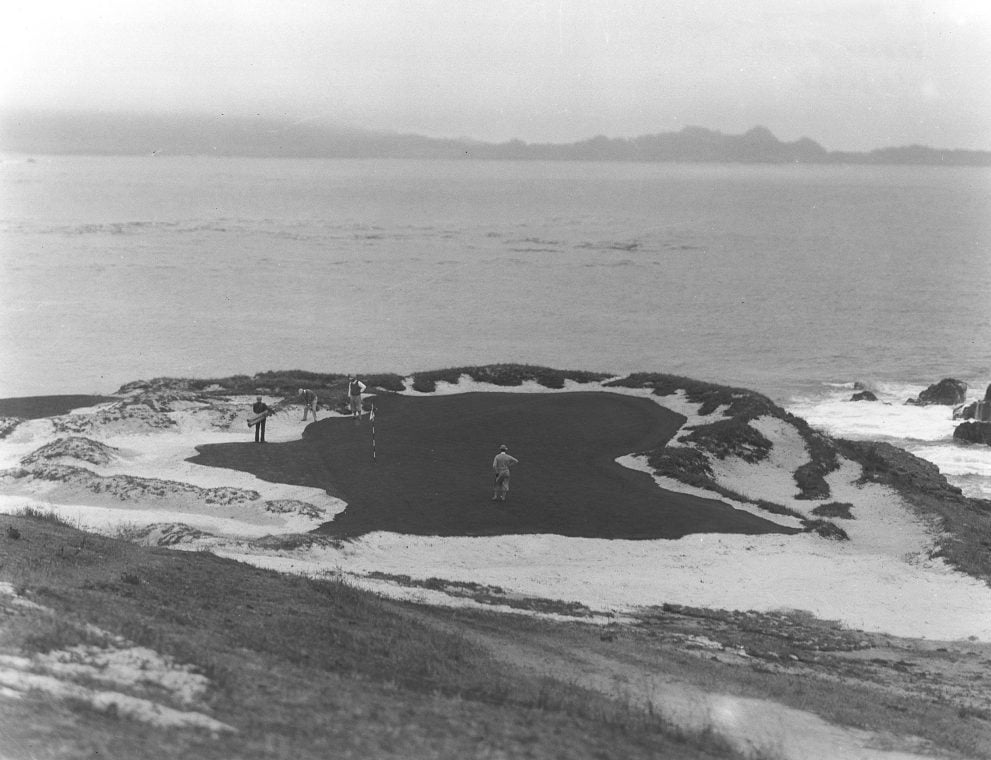
In preparation for the 1929 U.S. Amateur, Chandler Egan collaborated with Robert Hunter to create massive dunes around many of the coastal greens. In 1928, Egan wrote, “The new green has been placed as close to the ocean as possible. It is irregular in shape, one hundred feet long from the front to back and from forty-five to fifty feet wide. It is completely surrounded by sand dune bunkering.”
1940
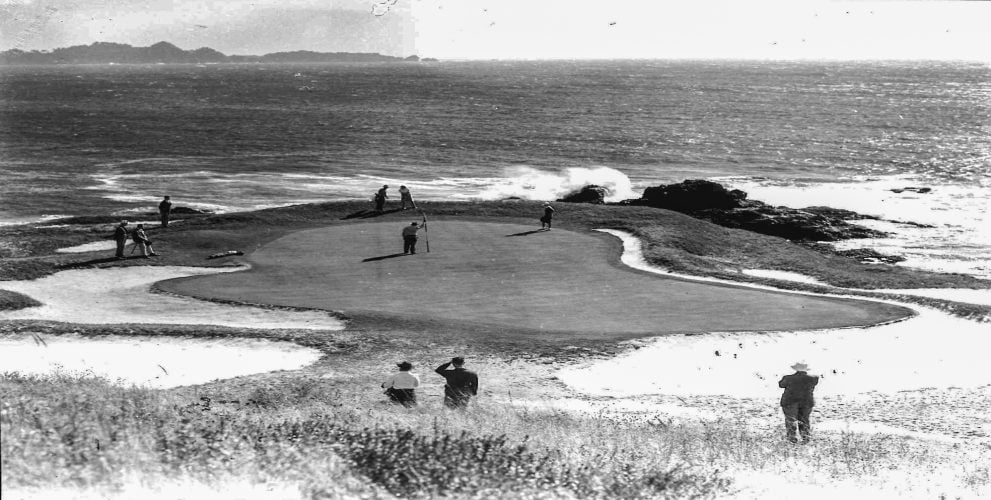
By the 1940 U.S. Women’s Amateur, the wavy and gyrating green was surrounded by manicured bunkers.
1952
The gallery crowds the 7th green during the 1952 Bing Crosby National Pro-Am.
1963
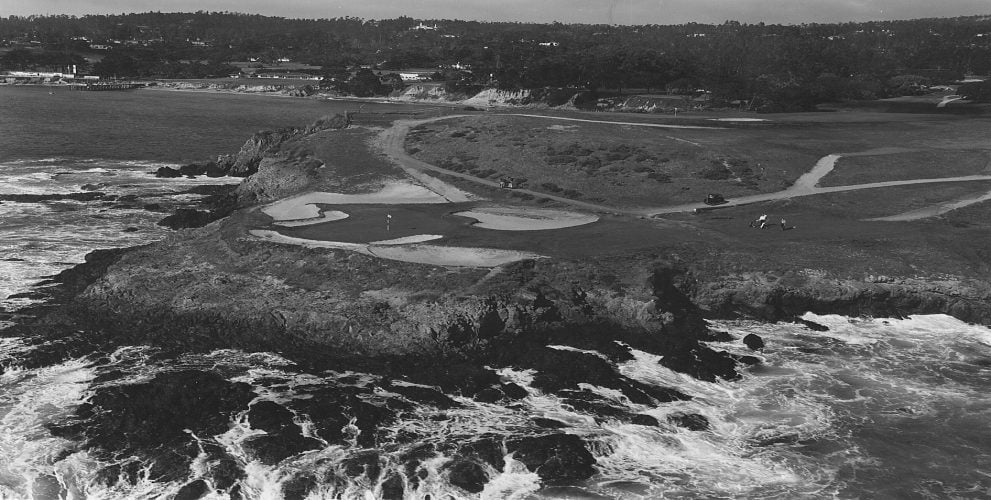
An aerial in 1963 shows more bunker movement, as well as some wear from the recently invented golf cart.
1965
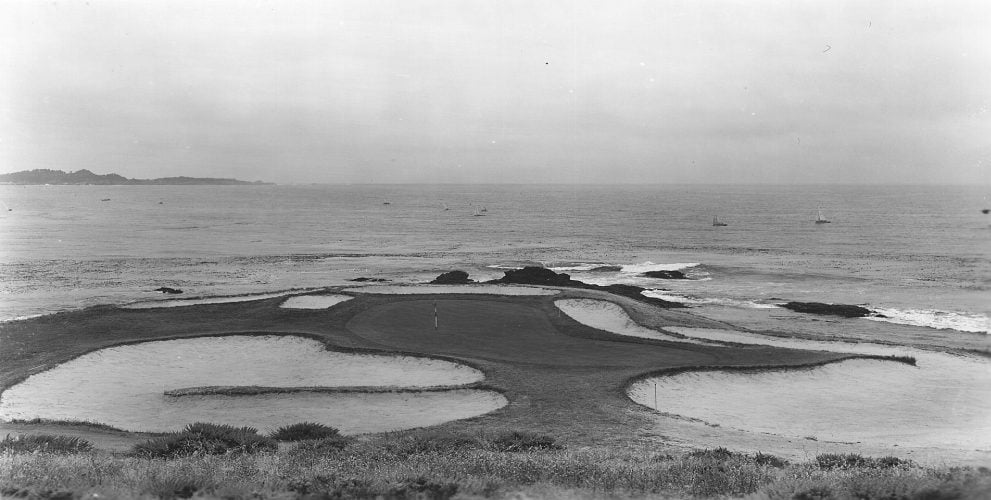
A view of the intimidating 7th green in 1965.
1977
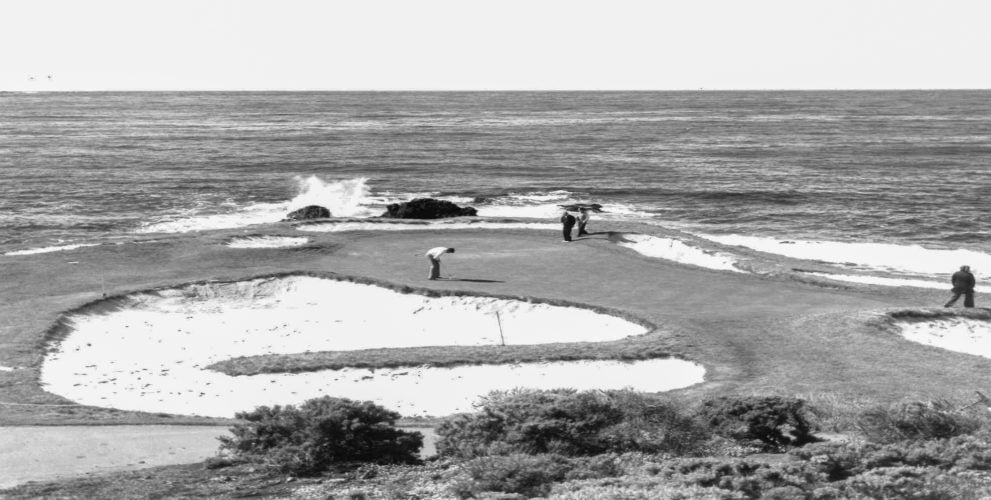
The bunkers had a steep and rugged look in 1977, the year Pebble Beach hosted the PGA Championship.
1992
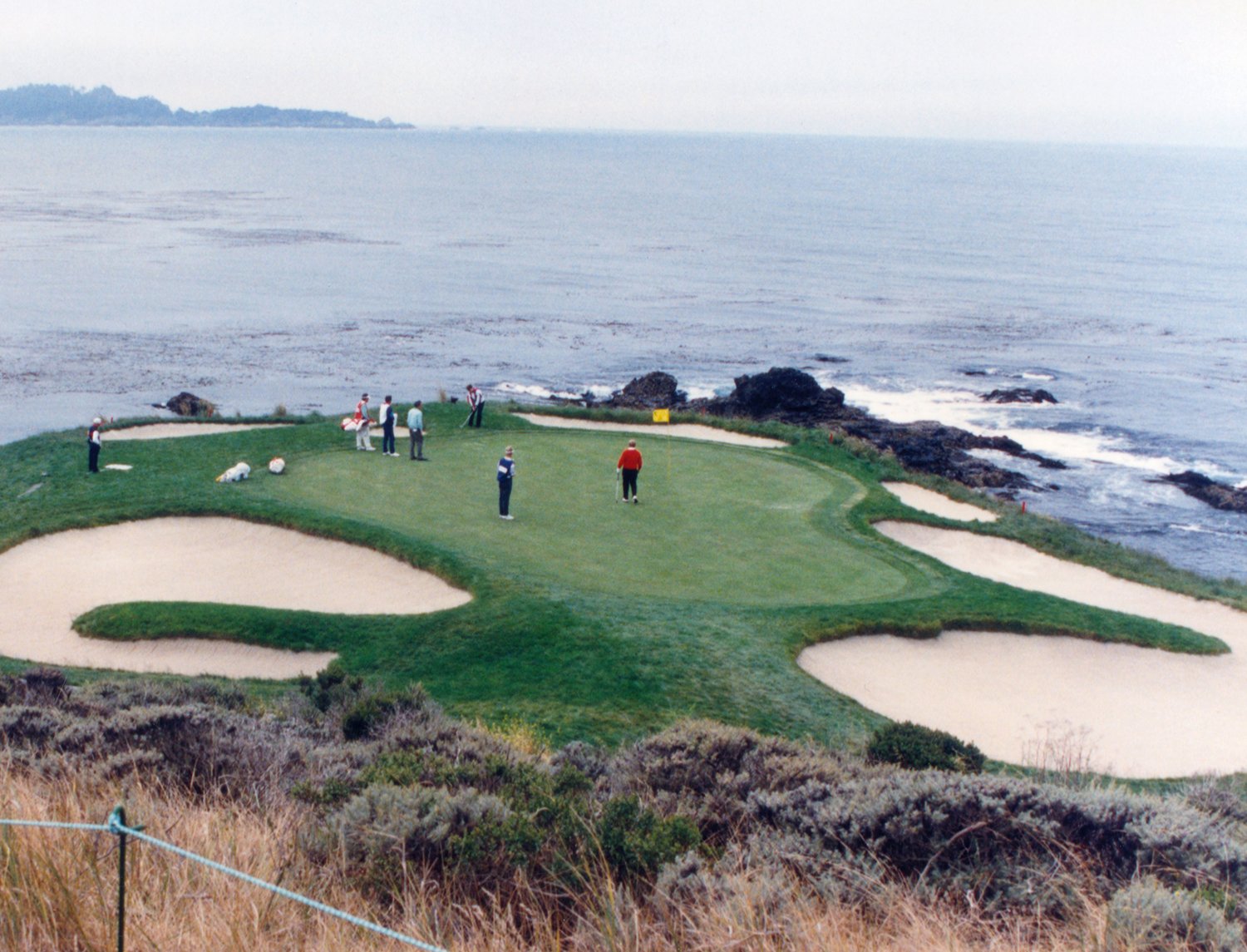
Ahead of the 1992 U.S. Open, the seventh green was rebuilt under the guidance of Pebble Beach Company Vice President Paul Spengler and Jack Nicklaus. Both happened to play at the 1961 U.S. Amateur at Pebble Beach, which was won by Nicklaus.
Today
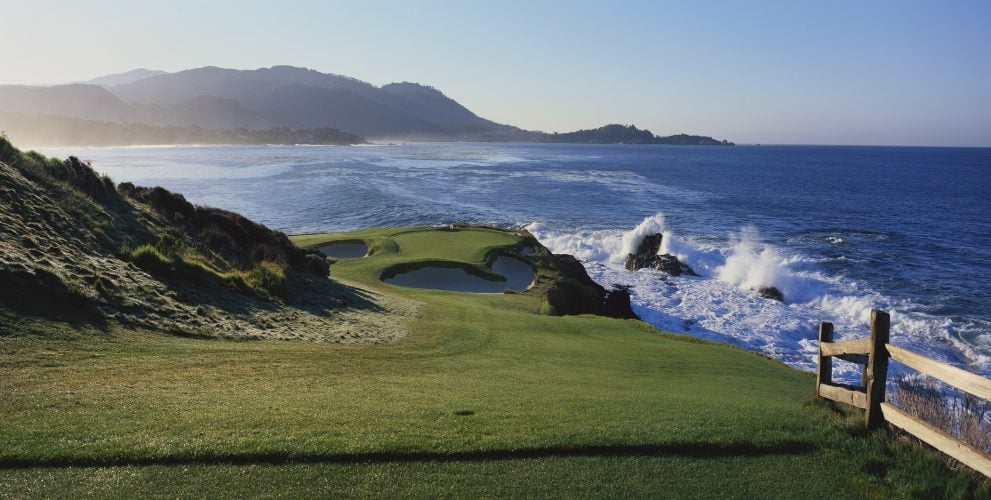
How it looks today…and still 106 yards. Everything from mashies and lob wedges to 3-irons and putters have been hit here.
What have you hit into the seventh hole?
